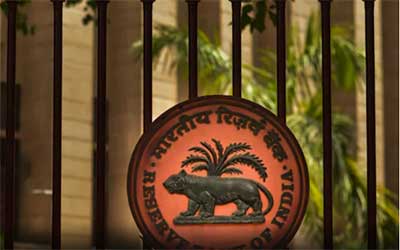GS-3:Indian Economy and issues relating to mobilization of resources, growth, development; Science and Technology - developments and their applications and effects in everyday life; indigenization of technology and developing new technology, Awareness in the fields of IT and Computers.
Key Phrases: RBI, CBDC, bank note, fiat currency, cryptocurrency, blockchain, decentralised virtual currencies.
Why in News?
The Reserve Bank of India (RBI) has proposed amendments to the Reserve Bank of India Act, 1934, which would enable it to launch a Central Bank Digital Currency (CBDC).
Keypoints:
•RBI has been examining use cases and working out a phased implementation strategy for introduction of CBDC with little or no disruption.
A cryptocurrency is a medium of exchange, such as the rupee or the US dollar, but is digital in format and uses encryption techniques to both control the creation of monetary units and to verify the exchange of money. Bitcoin is considered to be the world’s best known cryptocurrency and is the largest in the world according to market capitalisation, followed by Ethereum.
•In this regard, RBI has sent Government a proposal in October, 2021 for amendment to the Reserve Bank of India Act, 1934 to enhance the scope of the definition of ‘bank note’ to include currency in digital form.
The Central Bank Digital Currency (CBDC) is a digital form of fiat currency which can be transacted using wallets backed by blockchain and is regulated by the central bank.
- The concept of CBDCs was directly inspired by bitcoin, but it is different from decentralised virtual currencies and crypto assets, which are not issued by the state and lack the ‘legal tender’ status.
- As per RBI, a CBDC is the legal tender issued by a central bank in a digital form. It is the same as a fiat currency and is exchangeable one-to-one with the fiat currency. Only its form is different.
What is blockchain?
Satoshi Nakamoto- the person (or a group of people) who is said to have conceptualised an accounting system in the aftermath of the 2008 financial crisis — had mooted an idea where the transactions and the value of money would be recorded digitally on a publicly available and open ledger that contains all the transactions ever made, albeit in an anonymous and encrypted form. This ledger is called the blockchain.
Benefits of CBDC:
- CBDCs enable the user to conduct both domestic and cross border transactions which do not require a third party or a bank.
- It provides significant benefits, such as reduced dependency on cash, higher seigniorage due to lower transaction costs and reduced settlement risk.
- Introduction of CBDC would also possibly lead to a more robust, efficient, trusted, regulated and legal tender-based payments option.
- It is regulated by the central bank and, hence, less prone to volatility, unlike private cryptocurrencies.
- As per RBI, cryptocurrencies do not represent any person’s debt or liabilities. There is no ISSUER. They are not money (certainly not CURRENCY) as the word has come to be understood historically.
- CBDC also does not require the kind of investment needed in physical infrastructure for minting fiat money and is very cost-effective.
Way Forward:
- Financial literacy of the users and a robust IT system to withstand potential cyberattacks are two imperatives for a CBDC.
- Government is expected to introduce a bill in the ongoing winter session of Parliament for the creation of the official digital currency by RBI. This bill will prohibit all private cryptocurrencies in India but will allow for certain exceptions to promote the underlying technology of cryptocurrency and its uses.
Source: Indian Express
Prelims Question:
Q. Consider the following statements:
- It is a currency in digital format and uses encryption techniques to control creation.
- It can be transacted using wallets backed by blockchain.
- It is regulated by the central bank.
Which of the statement/s given above is/are correct with respect to CBDC?
A.1 only
B.1 and 2 only
C.2 and 3 only
D.3 only
Answer C
Mains Question:
Q. There are associated risks involved with CBDC which need to be carefully evaluated against the potential benefits. Evaluate.







